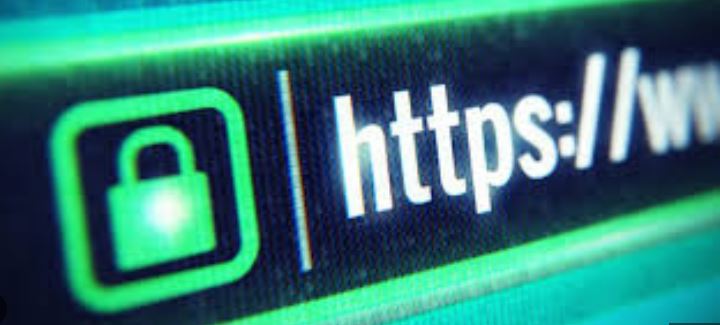Many of us trust the green lock icon and “Secure” label next to a URL, thinking it means the site is safe. But is it really that simple? More websites are using HTTPS now, but does that automatically make them secure?
𝐇𝐞𝐫𝐞’𝐬 𝐭𝐡𝐞 𝐜𝐨𝐧𝐭𝐫𝐨𝐯𝐞𝐫𝐬𝐢𝐚𝐥 𝐭𝐫𝐮𝐭𝐡: 𝐓𝐡𝐚𝐭 𝐠𝐫𝐞𝐞𝐧 𝐥𝐨𝐜𝐤 𝐝𝐨𝐞𝐬𝐧’𝐭 𝐠𝐮𝐚𝐫𝐚𝐧𝐭𝐞𝐞 𝐬𝐚𝐟𝐞𝐭𝐲.
Even phishing sites can display HTTPS and a green lock. Let’s break it down:
𝟏. 𝐀 𝐒𝐞𝐜𝐮𝐫𝐞 𝐂𝐨𝐧𝐧𝐞𝐜𝐭𝐢𝐨𝐧 𝐈𝐬 𝐍𝐨𝐭 𝐀𝐥𝐰𝐚𝐲𝐬 𝐚 𝐒𝐞𝐜𝐮𝐫𝐞 𝐒𝐢𝐭𝐞
𝐖𝐡𝐚𝐭 𝐭𝐡𝐞 𝐆𝐫𝐞𝐞𝐧 𝐋𝐨𝐜𝐤 𝐌𝐞𝐚𝐧𝐬: 𝐈𝐭 𝐬𝐡𝐨𝐰𝐬 𝐭𝐡𝐚𝐭 𝐭𝐡𝐞 𝐬𝐢𝐭𝐞 𝐞𝐧𝐜𝐫𝐲𝐩𝐭𝐬 𝐝𝐚𝐭𝐚 𝐛𝐞𝐭𝐰𝐞𝐞𝐧 𝐲𝐨𝐮 𝐚𝐧𝐝 𝐭𝐡𝐞 𝐬𝐢𝐭𝐞, 𝐩𝐫𝐨𝐭𝐞𝐜𝐭𝐢𝐧𝐠 𝐢𝐭 𝐟𝐫𝐨𝐦 𝐭𝐡𝐢𝐫𝐝-𝐩𝐚𝐫𝐭𝐲 𝐢𝐧𝐭𝐞𝐫𝐜𝐞𝐩𝐭𝐢𝐨𝐧.
𝐓𝐡𝐞 𝐑𝐞𝐚𝐥 𝐈𝐬𝐬𝐮𝐞: The green lock doesn’t verify the site’s legitimacy. Phishing sites can also get certificates and encrypt data, making you think they are safe.
𝟐. 𝐖𝐡𝐚𝐭 𝐈𝐟 𝐓𝐡𝐞𝐫𝐞’𝐬 𝐍𝐨 𝐆𝐫𝐞𝐞𝐧 𝐋𝐨𝐜𝐤?
𝐍𝐨 𝐋𝐨𝐜𝐤: 𝐓𝐡𝐢𝐬 𝐦𝐞𝐚𝐧𝐬 𝐭𝐡𝐞 𝐬𝐢𝐭𝐞 𝐝𝐨𝐞𝐬𝐧’𝐭 𝐮𝐬𝐞 𝐞𝐧𝐜𝐫𝐲𝐩𝐭𝐢𝐨𝐧. 𝐃𝐨𝐧’𝐭 𝐞𝐧𝐭𝐞𝐫 𝐬𝐞𝐧𝐬𝐢𝐭𝐢𝐯𝐞 𝐢𝐧𝐟𝐨 𝐡𝐞𝐫𝐞, 𝐚𝐬 𝐢𝐭’𝐬 𝐞𝐚𝐬𝐲 𝐟𝐨𝐫 𝐨𝐭𝐡𝐞𝐫𝐬 𝐭𝐨 𝐬𝐞𝐞.
𝐑𝐞𝐝 𝐋𝐨𝐜𝐤 𝐖𝐚𝐫𝐧𝐢𝐧𝐠: Indicates an unverified or expired certificate. The connection is encrypted, but the site’s authenticity is questionable. Avoid entering personal info.
𝟑. 𝐇𝐨𝐰 𝐭𝐨 𝐀𝐯𝐨𝐢𝐝 𝐒𝐜𝐚𝐦𝐬
Stay Alert: Always check if a site is authentic.
Check Domain Names: Look closely at the domain name. Phishing sites often use names that are almost identical to real sites.
Trustworthy Links: Ensure links are reliable before clicking.
Protect Your Devices: Use security tools like Kaspersky Internet Security to check URLs and detect scams, no matter how safe they look.
B̲o̲t̲t̲o̲m̲ ̲L̲i̲n̲e̲:̲
̲A̲ ̲c̲e̲r̲t̲i̲f̲i̲c̲a̲t̲e̲ ̲a̲n̲d̲ ̲a̲ ̲g̲r̲e̲e̲n̲ ̲l̲o̲c̲k̲ ̲m̲e̲a̲n̲ ̲y̲o̲u̲r̲ ̲d̲a̲t̲a̲ ̲i̲s̲ ̲e̲n̲c̲r̲y̲p̲t̲e̲d̲,̲ ̲b̲u̲t̲ ̲i̲t̲ ̲d̲o̲e̲s̲n̲’̲t̲ ̲m̲e̲a̲n̲ ̲t̲h̲e̲ ̲s̲i̲t̲e̲ ̲i̲s̲ ̲s̲a̲f̲e̲.̲ ̲P̲h̲i̲s̲h̲e̲r̲s̲ ̲u̲s̲e̲ ̲t̲h̲i̲s̲ ̲t̲o̲ ̲t̲r̲i̲c̲k̲ ̲y̲o̲u̲.̲
Do you think HTTPS is overrated as a safety measure? Share your thoughts in the comments!

